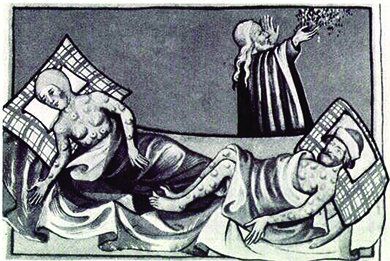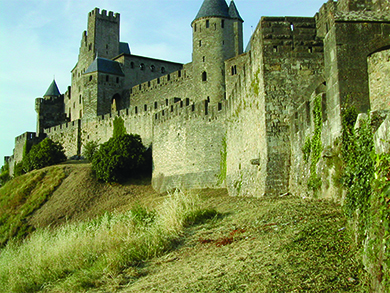| << Chapter < Page | Chapter >> Page > |
The fall of the Roman Empire (476 CE) and the beginning of the European Renaissance in the late fourteenth century roughly bookend the period we call the Middle Ages. Without a dominant centralized power or overarching cultural hub, Europe experienced political and military discord during this time. Its inhabitants retreated into walled cities, fearing marauding pillagers including Vikings, Mongols, Arabs, and Magyars. In return for protection, they submitted to powerful lords and their armies of knights. In their brief, hard lives, few people traveled more than ten miles from the place they were born.
The Christian Church remained intact, however, and emerged from the period as a unified and powerful institution. Priests, tucked away in monasteries, kept knowledge alive by collecting and copying religious and secular manuscripts, often adding beautiful drawings or artwork. Social and economic devastation arrived in 1340s, however, when Genoese merchants returning from the Black Sea unwittingly brought with them a rat-borne and highly contagious disease, known as the bubonic plague. In a few short years, it had killed many millions, about one-third of Europe’s population. A different strain, spread by airborne germs, also killed many. Together these two are collectively called the Black Death ( [link] ). Entire villages disappeared. A high birth rate, however, coupled with bountiful harvests, meant that the population grew during the next century. By 1450, a newly rejuvenated European society was on the brink of tremendous change.

Visit EyeWitness to History to learn more about the Black Death.
During the Middle Ages, most Europeans lived in small villages that consisted of a manorial house or castle for the lord, a church, and simple homes for the peasants or serfs , who made up about 60 percent of western Europe’s population. Hundreds of these castles and walled cities remain all over Europe ( [link] ).

Europe’s feudal society was a mutually supportive system. The lords owned the land; knights gave military service to a lord and carried out his justice; serfs worked the land in return for the protection offered by the lord’s castle or the walls of his city, into which they fled in times of danger from invaders. Much land was communally farmed at first, but as lords became more powerful they extended their ownership and rented land to their subjects. Thus, although they were technically free, serfs were effectively bound to the land they worked, which supported them and their families as well as the lord and all who depended on him. The Catholic Church, the only church in Europe at the time, also owned vast tracts of land and became very wealthy by collecting not only tithes (taxes consisting of 10 percent of annual earnings) but also rents on its lands.

Notification Switch
Would you like to follow the 'U.s. history' conversation and receive update notifications?